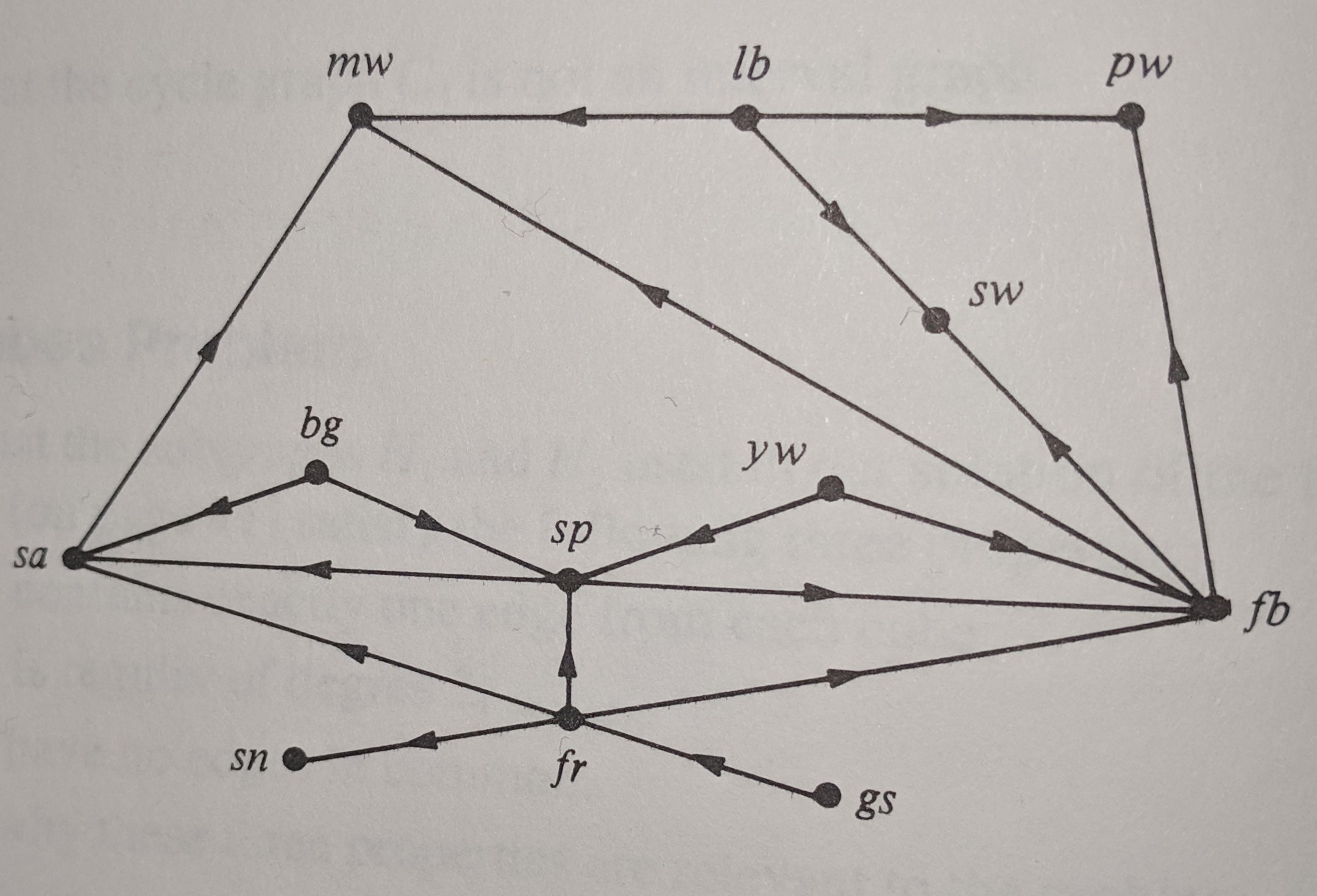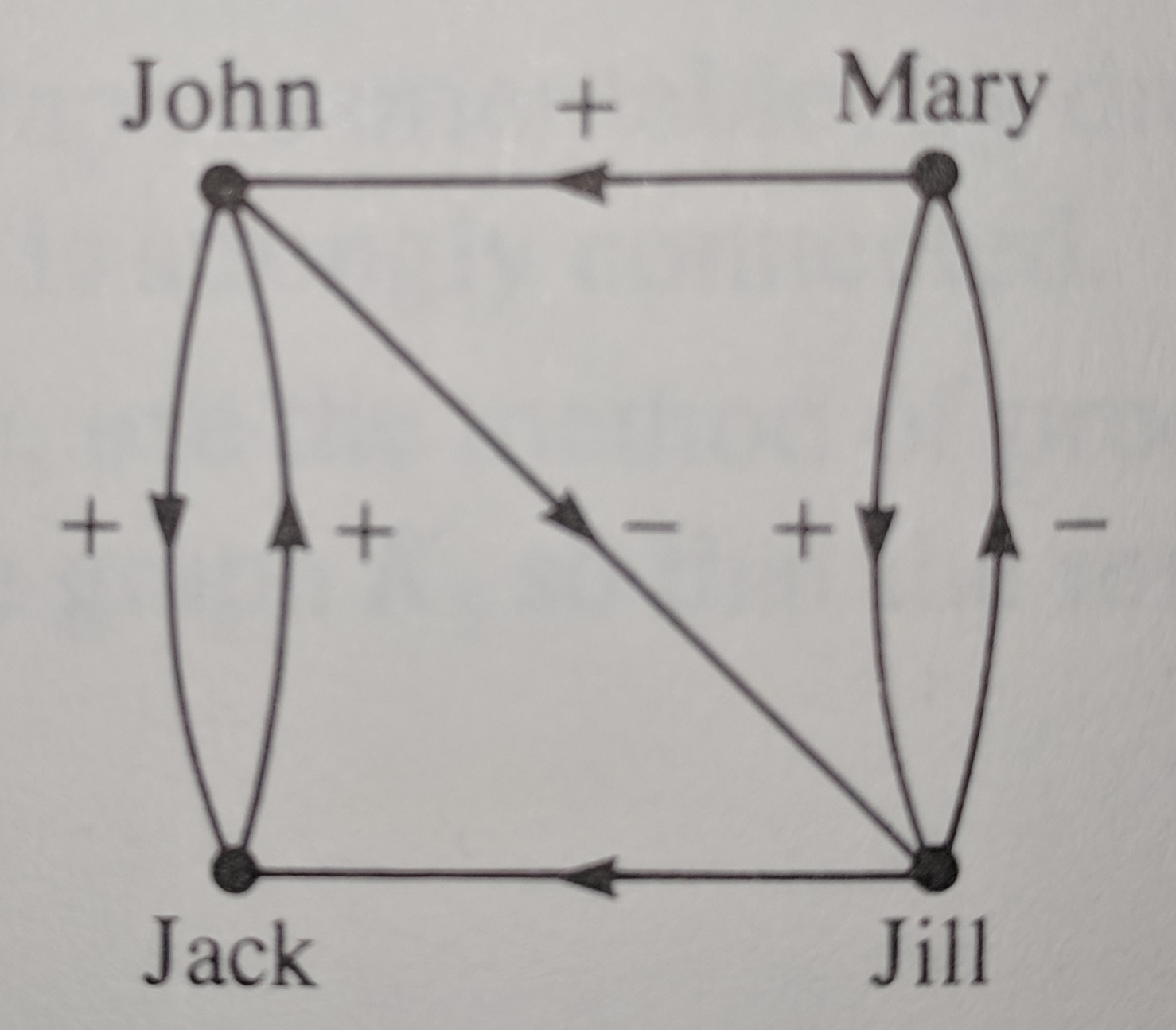Digraphs
Directed graphs or digraphs are graphs with vertices and arcs, or directed lines (or arrows).
The formal definition from Wilson and Watkins (1990)
is as follows: A digraph D consists of a set of elements, called vertices, and a list of
ordered pairs of these elements, called arcs. The set of vertices is called the vertex-set of D, denoted by V(D), and the list of arcs is called the arc-list
of D, denoted by A(D). If v and w are vertics of D, then an arc of the form vw is said to be directs from v to w or to joint v to w.
Many of the definitions are similar to those listed in the Definition section, with slight differences, because digraphs use arcs instead of lines.
One application of a digraph is a food web, used in ecology. To investigate a food web more, visit the Biology subsection of the Applications section. Below is the digraph for the
food web found in the Biology subsection.
One other application can be found in the Social Science subsection under the Applications section. This application falls under interpersonal relationships. Graphs representing
interpersonal relationships can be digraphs. If they are digraphs, they represent something different than graphs that aren't directed. An example of a signed digraph representing
relationships between John, Mary, Jack, and Jill. A '+' represents the relationship of liking, and a '-' represents the relationship of disliking.


